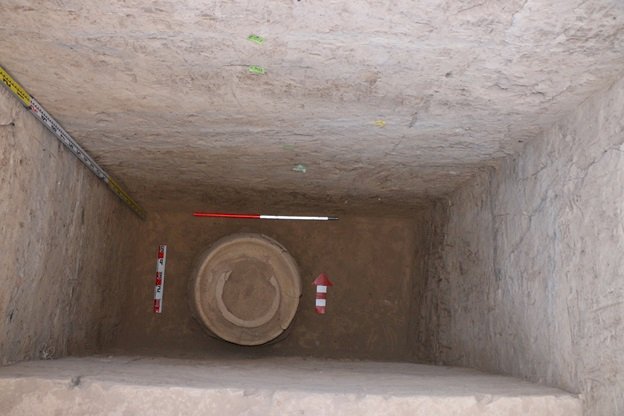New evidence of prehistorical settlement comes to light in southern Iran

TEHRAN – A team of archaeologists has uncovered new clues about a prehistorical settlement in the Marvdasht plain of Fars province in southern Iran.
Evidence from a prehistorical settlement has come to light after archaeologists carved several trenches in Tall-e Qaleh to study cultural layers of the ancient mount, CHTN quoted archaeologist Fazlollah Habibi as saying on Saturday.
“We have unearthed remnants estimated to date sometime between the 5th millennium BC to the 2nd millennium BC,” Habibi, who presides the archaeological team, said.
“First, with the aim to demarcation, we carved 12 trenches each measuring 1 by 1 meter, which yielded remnants dating from the 5th millennium BC to the 2nd millennium BC,” the archaeologist explained.
“In the end, the team specified an area covering 5.5 ha to determine the boundaries of the archaeological site,” he said.
Furthermore, the team conducted a stratigraphy study to analyze the order and position of archaeological layers at the site.
To fulfill a stratigraphy study, we dug two trenches on the southern side of the mount, which resulted in the discovery of a ruined Elamite-era mudbrick structure, the archaeologist explained. In addition, the team discovered some tomb chambers with urn burial places.
The excavations, however, came to an end when archaeologists reached intact soil at a depth of 620 cm below the surface.
Experts believe the ecosystem of Marvdasht plain, which was once the seat of power for the Achaemenid Persian Empire (c. 550 – 330 BC) in southern Iran, has been one of the most important factors in the creation and development of several thousand years of civilization in this region.
That is why the remains of different settlements and cultures have been discovered during many excavations carried out in ancient hills and historical sites of the plain, cultural heritage expert Hamid Fadaei says.
The ancient region, known as Pars (Fars), or Persis, was the heart of the Achaemenid Empire founded by Cyrus the Great and had its capital at Pasargadae. Darius I the Great moved the capital to nearby Persepolis in the late 6th or early 5th century BC. Alexander the Great defeated the Achaemenian army at Arbela in 331 and burned Persepolis apparently as revenge on the Persians because it seems the Persian King Xerxes had burnt the Greek City of Athens around 150 years earlier.
Persis became part of the Seleucid kingdom in 312 after Alexander’s death. The Parthian empire (247 BC– 224 CE) of the Arsacids (corresponding roughly to the modern Khorasan in Iran) replaced the Seleucids' rule in Persis during 170–138 BC. The Sasanid Empire (224 CE–651) had its capital at Istkhr. Not until the 18th century, under the Zand dynasty (1750–79) of southern Iran, did Fars again become the heart of an empire, with its capital at Shiraz.
AFM
